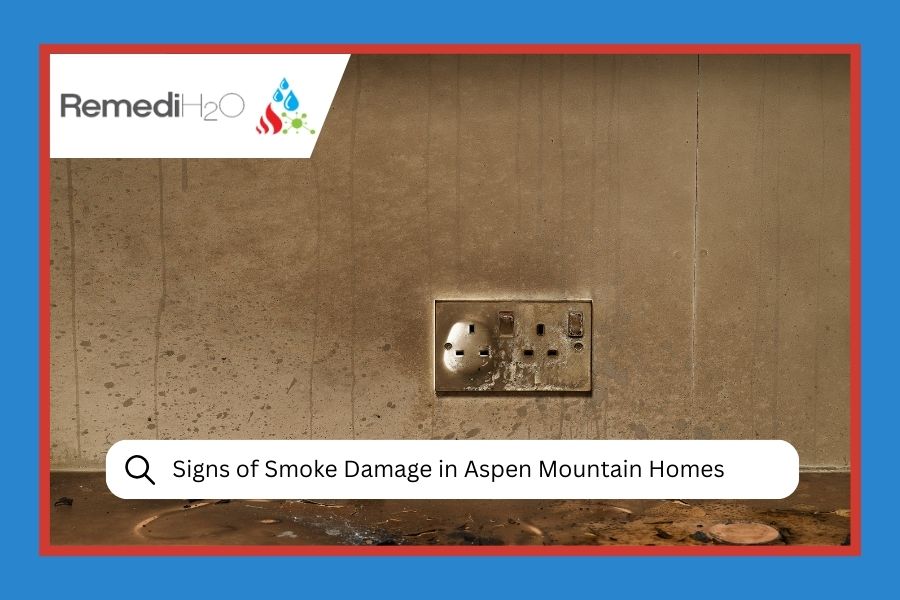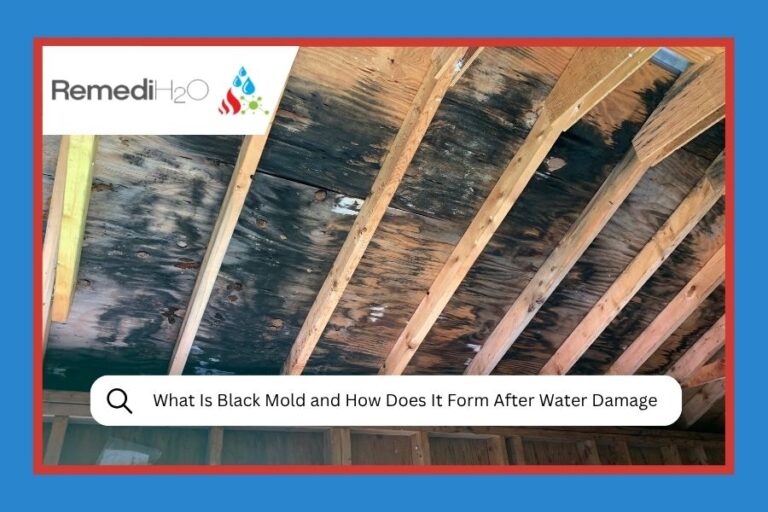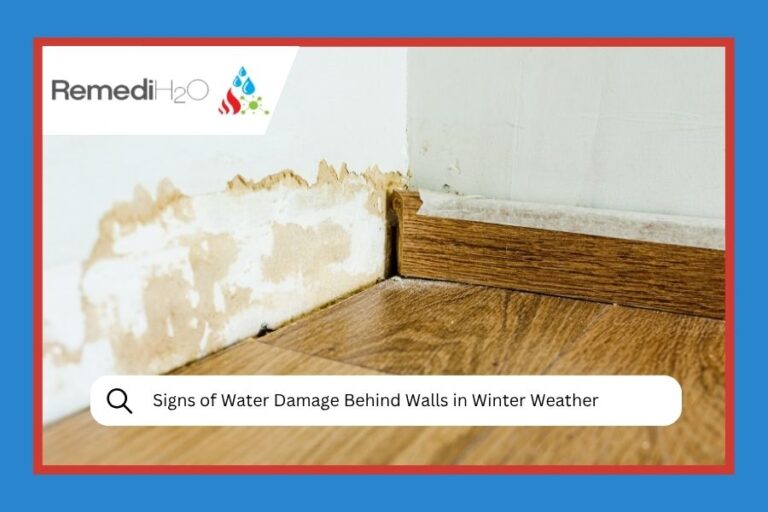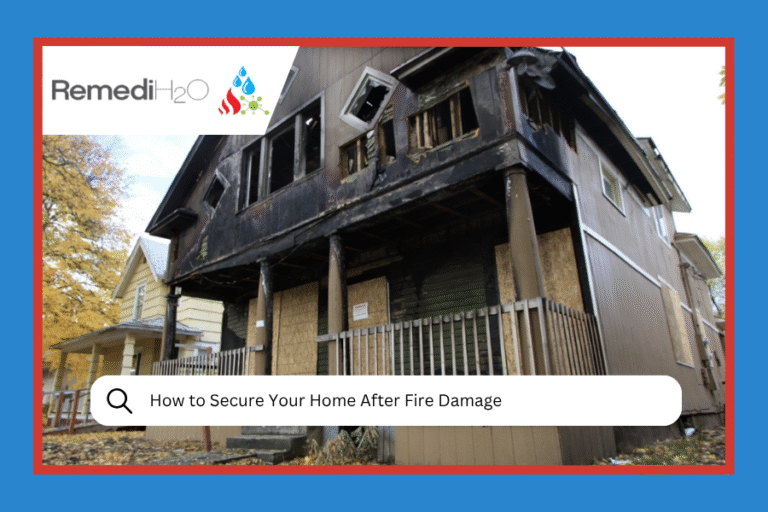Jump to Section:
Living in the mountains around Aspen means dealing with fire risks that come with the territory. Whether it’s from recent wildfires affecting Colorado’s Western Slope or a house fire down the street, smoke has a sneaky way of getting into places you’d never expect. While most homeowners know to look for obvious soot stains, the real damage often happens where you can’t see it. Our team at RemediH2O has seen firsthand how smoke damage can wreak havoc on mountain homes, and trust me, it’s not always where you’d think to look.
Why Mountain Homes Face Unique Smoke Challenges
Here’s something most people don’t realize: mountain homes are actually more vulnerable to smoke infiltration than houses at lower elevations. The combination of dry air, temperature fluctuations, and those gorgeous but drafty mountain construction styles creates the perfect storm for smoke to settle in unexpected places.
We’ve worked on homes in Snowmass, Basalt, and throughout the Roaring Fork Valley where smoke damage showed up weeks or even months after the initial incident. It’s like smoke has its own GPS system for finding the most inconvenient places to cause problems.
The Obvious Signs Everyone Knows About
Let’s start with the no-brainers. If you see black or gray stains on walls, ceilings, or around vents, you’ve got visible smoke damage. Same goes for that unmistakable burnt smell that makes you wrinkle your nose the second you walk in the door. But here’s where it gets interesting: these obvious signs are just the tip of the iceberg.
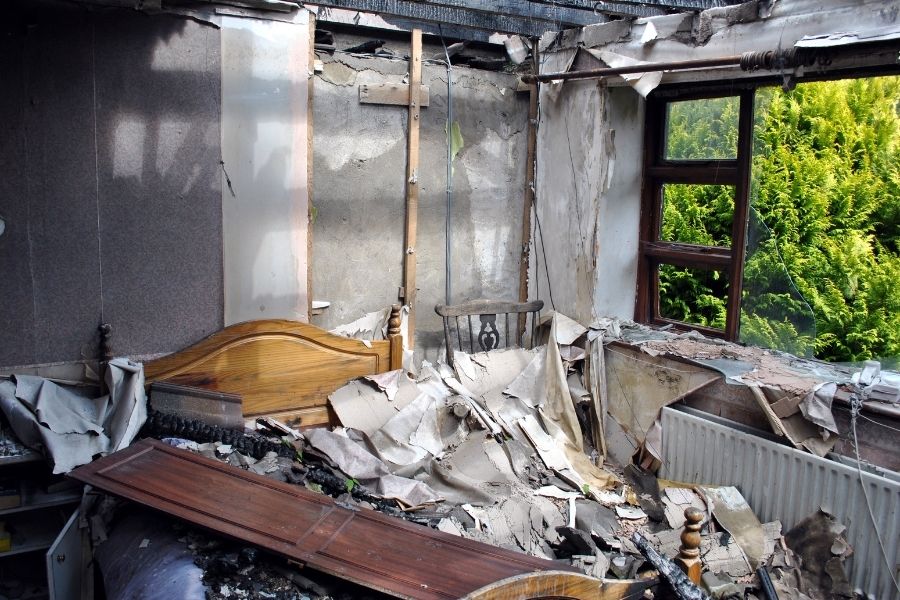
Visible soot damage on walls and surfaces represents only a fraction of the total smoke damage that may be present in your home.
Ready to Address Smoke Damage Concerns?
Our IICRC-certified team provides 24/7 emergency response throughout Colorado’s Western Slope and Roaring Fork Valley.
Free assessment • 24/7 emergency service
Hidden Smoke Damage: The Real Troublemakers
HVAC Systems Become Smoke Highways
Your heating and cooling system is basically a highway for smoke particles. Those ducts that keep your home comfortable? They’re also perfect conduits for spreading smoke throughout your entire house, even to rooms that weren’t directly affected by the fire.
Check your air filters first. If they’re darker than usual or have a burnt smell, that’s smoke damage. But the real problem is what’s coating the inside of your ductwork. We’ve pulled out ductwork that looked fine from the outside but was coated with a film of smoke residue on the inside.
Electronics: Silent Victims of Smoke Exposure
This one always surprises people. Smoke particles are incredibly small and love to settle inside electronic devices. Your TV, computer, sound system, even your refrigerator’s control panel can be affected. The smoke residue creates a film on internal components that can cause equipment to overheat or malfunction months later.
Electronic Smoke Damage Warning Signs
| Warning Sign | What It Means |
|---|---|
| Devices running hotter than usual | Smoke residue interfering with cooling systems |
| Shorter battery life | Corrosion from smoke particles affecting connections |
| Strange smells when warming up | Smoke residue burning off internal components |
| Intermittent performance issues | Film buildup disrupting electrical connections |
Insulation: The Hidden Sponge
Mountain homes rely heavily on insulation to stay warm during our brutal winters. Unfortunately, insulation acts like a giant sponge for smoke particles. Once contaminated, it continues releasing odors and potentially harmful particles for years.
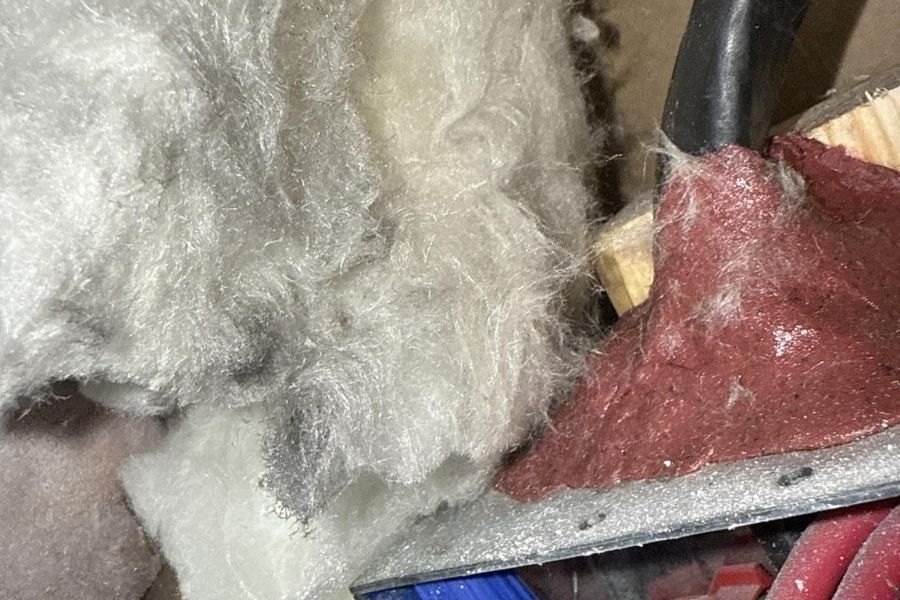
Smoke-contaminated insulation can continue releasing odors and harmful particles for years if not properly addressed during restoration.
This is especially problematic in attics and crawl spaces where insulation might not get much airflow. We’ve found smoke-damaged insulation in homes where the owners had no idea there was a problem until they started noticing persistent odors or respiratory issues.
The Smell Test: Your Nose Knows
Here’s a pro tip from our years of mold remediation services work: your nose is often more accurate than your eyes when it comes to detecting hidden smoke damage.
Identifying Different Smoke Odors
Not all smoke smells the same, and different odors can tell you different things about the extent of damage:
Smoke Odor Detection Guide
Sharp, Acrid
Recent damage or heavy concentration areas
Sweet, Lingering
Synthetic materials like carpets or furniture
Musty Smoke
Moisture mixed with smoke residue
Walk through your home at different times of day. Temperature changes can cause odors to become more pronounced, helping you identify problem areas you might have missed.
Professional Detection Methods You Should Know About
Thermal Imaging: Seeing the Invisible
We use thermal imaging cameras to detect temperature differences that indicate smoke damage behind walls or in other hidden areas. Smoke residue changes how materials absorb and release heat, creating signatures we can track with specialized equipment.
Air Quality Testing
While we can’t provide air quality testing due to Colorado state regulations, we work with certified professionals who can. This testing reveals particle levels and identifies specific contaminants that visual inspection might miss.
Moisture Detection
Smoke often comes with water damage from firefighting efforts. Our moisture detection equipment helps identify areas where smoke and water damage might be creating compound problems that could lead to mold growth.
When to Call the Professionals
Look, we’re not trying to scare you, but some smoke damage situations are definitely DIY territory, and others absolutely are not. Here’s how to tell the difference:
✓ DIY-Friendly Situations:
- Light surface soot on non-porous surfaces
- Washable fabrics with minimal exposure
- Small areas with no structural involvement
⚠ Call the Pros When:
- Smoke smell persists after cleaning
- HVAC systems are involved
- Electronics are affected
- Areas larger than 10 square feet
- Any respiratory symptoms develop
The Cost of Waiting
Here’s something that might shock you: waiting to address smoke damage doesn’t just make the problem worse, it makes it exponentially more expensive to fix. Smoke particles continue to spread and settle deeper into materials over time. What might be a $3,000 cleanup job today could easily become a $10,000+ restoration project in six months.
We’ve seen too many mountain homeowners try to “tough it out” only to end up with respiratory issues, permanently damaged belongings, and repair bills that could have funded a nice vacation instead. Understanding what fire damage restoration includes can help you appreciate why professional assessment is so crucial.
Your Action Plan for Smoke Damage Detection
Monthly Home Inspection Checklist
Monthly Smoke Damage Detection Checklist
Visual Check:
Smell Test:
System Check:
Protecting Your Investment
Your mountain home is more than just a place to live, it’s an investment in the lifestyle that drew you to Colorado’s Western Slope in the first place. Addressing smoke damage quickly and thoroughly protects both your health and your property value.
The key is staying vigilant without becoming paranoid. Regular inspections, prompt attention to any concerning signs, and knowing when to call in professionals will keep your home healthy and comfortable for years to come. Just like our recent fire restoration project in Rifle, Colorado demonstrated, quick professional response makes all the difference in protecting your investment.
Frequently Asked Questions
How long after a fire incident can smoke damage appear?
Smoke damage effects can become apparent weeks or even months after the initial exposure. Particles continue to settle and react with other materials over time, which is why immediate professional assessment is so important, even if damage isn’t immediately visible.
Can smoke damage affect my home’s resale value?
Absolutely. Undisclosed or improperly addressed smoke damage can significantly impact property values and may create legal issues during sales. Proper professional remediation and documentation actually protect and can even enhance your home’s value by ensuring it’s truly restored to healthy conditions.
Is smoke damage covered by homeowners insurance?
Coverage depends on the source of the smoke and your specific policy. Smoke damage from wildfires or neighboring properties is often covered, while damage from smoking inside the home typically isn’t. We work directly with insurance companies to help navigate claims and ensure you get the coverage you’re entitled to.
What’s the difference between cleaning smoke damage myself versus hiring professionals?
Surface cleaning might address visible soot, but professional remediation tackles hidden damage in HVAC systems, behind walls, and in porous materials. We also have specialized equipment for odor elimination and can identify secondary issues like moisture damage that DIY methods often miss.
Don’t Let Hidden Smoke Damage Threaten Your Mountain Home
If you’ve noticed any of these signs of smoke damage in your Aspen area home, don’t wait to address them. Our experienced team at RemediH2O provides comprehensive smoke damage assessment and restoration services throughout Colorado’s Western Slope and Roaring Fork Valley.
24/7 emergency service • IICRC certified • Insurance claim assistance
